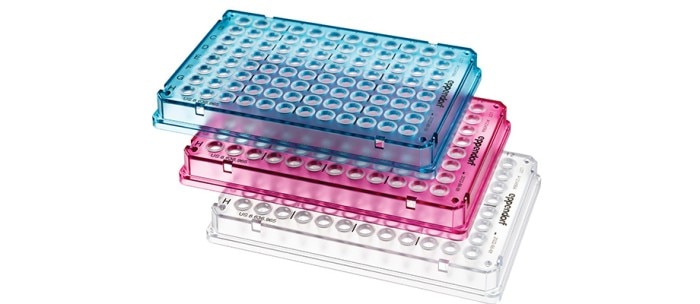メニュー
JP | JPY
-
-
-
- Challenges and Chances: A Review of the 1st Stem Cell Community Day
- Summertime, and the Livin’ Is Easy…
- Follow-on-Biologics – More than Simple Generics
- Bacteria Versus Body Cells: A 1:1 Tie
- Behind the Crime Scene: How Biological Traces Can Help to Convict Offenders
- Every 3 Seconds Someone in the World Is Affected by Alzheimer's
- HIV – It’s Still Not Under Control…
- How Many Will Be Convicted This Time?
- Malaria – the Battle is Not Lost
- Physicians on Standby: The Annual Flu Season Can Be Serious
- At the Forefront in Fighting Cancer
- Molecular Motors: Think Small and yet Smaller Again…
- Liquid Biopsy: Novel Methods May Ease Cancer Detection and Therapy
- They Are Invisible, Sneaky and Disgusting – But Today It’s Their Special Day!
- How Many Cells Are in Your Body? Probably More Than You Think!
- What You Need to Know about Antibiotic Resistance – Findings, Facts and Good Intentions
- Why Do Old Men Have Big Ears?
- The Condemned Live Longer: A Potential Paradigm Shift in Genetics
- From Research to Commerce
- Chronobiology – How the Cold Seasons Influence Our Biorhythms
- Taskforce Microbots: Targeted Treatment from Inside the Body
- Eyes on Cancer Therapy
-
-
-
-
-
- Challenges and Chances: A Review of the 1st Stem Cell Community Day
- Summertime, and the Livin’ Is Easy…
- Follow-on-Biologics – More than Simple Generics
- Bacteria Versus Body Cells: A 1:1 Tie
- Behind the Crime Scene: How Biological Traces Can Help to Convict Offenders
- Every 3 Seconds Someone in the World Is Affected by Alzheimer's
- HIV – It’s Still Not Under Control…
- How Many Will Be Convicted This Time?
- Malaria – the Battle is Not Lost
- Physicians on Standby: The Annual Flu Season Can Be Serious
- At the Forefront in Fighting Cancer
- Molecular Motors: Think Small and yet Smaller Again…
- Liquid Biopsy: Novel Methods May Ease Cancer Detection and Therapy
- They Are Invisible, Sneaky and Disgusting – But Today It’s Their Special Day!
- How Many Cells Are in Your Body? Probably More Than You Think!
- What You Need to Know about Antibiotic Resistance – Findings, Facts and Good Intentions
- Why Do Old Men Have Big Ears?
- The Condemned Live Longer: A Potential Paradigm Shift in Genetics
- From Research to Commerce
- Chronobiology – How the Cold Seasons Influence Our Biorhythms
- Taskforce Microbots: Targeted Treatment from Inside the Body
- Eyes on Cancer Therapy
-
-
JP | JPY
Sorry, we couldn't find anything on our website containing your search term.

twin.tec Trace: The Next Generation
Lab Academy
- 分子生物学
- 次世代シークエンシング
- 増幅およびPCR
- チューブ
- BioNews article
Eppendorf twin.tec® PCR Plates are an established plate format in the laboratory. Their thin-walled polypropylene wells and robust polycarbonate frame ensure optimal heat transfer and high dimensional stability. These materials confer extreme durability on the twin.tec PCR Plates during incubation and centrifugation as well as in automated processes.
This article appeared first in BioNews, Eppendorf’s application-oriented customer magazine since 1993.
NEW: “Trace” – for even better traceability
Eppendorf twin.tec Trace PCR Plates are our latest and most advanced PCR plates. An exciting new design and innovative features guarantee outstanding performance. The laser-engraved lot number and expiry date on each single plate improve traceability in your laboratory processes and thus make these new plates an excellent choice for all regulated workflows. The innovative optical guiding grid, together with the proven OptiTrack® matrix, enables quick orientation within the plate which, in turn, simplifies manual and semi-automated pipetting and dispensing. Raised well rims allow an effective sealing and minimize the risk of cross-contamination.
… and even more color
While the traditional classic twin.tec PCR Plates are already colorful, the new colors of the twin.tec Trace PCR Plates – crystal blue and fuchsia – provide even more variety in the laboratory, plus they improve readability and labeling contrast. Their outstanding reproducibility, as well as other specifications, are equivalent to those of the traditional twin.tec PCR Plates. This makes the twin.tec Trace PCR Plates a perfect choice for high-throughput applications as well as automated workflows and standardized processes. twin.tec Trace PCR Plates are also available with barcode; they are batch-tested and certified free from DNA, DNase, RNase, and PCR inhibitors (PCR clean).
NEW: “Trace” – for even better traceability
Eppendorf twin.tec Trace PCR Plates are our latest and most advanced PCR plates. An exciting new design and innovative features guarantee outstanding performance. The laser-engraved lot number and expiry date on each single plate improve traceability in your laboratory processes and thus make these new plates an excellent choice for all regulated workflows. The innovative optical guiding grid, together with the proven OptiTrack® matrix, enables quick orientation within the plate which, in turn, simplifies manual and semi-automated pipetting and dispensing. Raised well rims allow an effective sealing and minimize the risk of cross-contamination.
… and even more color
While the traditional classic twin.tec PCR Plates are already colorful, the new colors of the twin.tec Trace PCR Plates – crystal blue and fuchsia – provide even more variety in the laboratory, plus they improve readability and labeling contrast. Their outstanding reproducibility, as well as other specifications, are equivalent to those of the traditional twin.tec PCR Plates. This makes the twin.tec Trace PCR Plates a perfect choice for high-throughput applications as well as automated workflows and standardized processes. twin.tec Trace PCR Plates are also available with barcode; they are batch-tested and certified free from DNA, DNase, RNase, and PCR inhibitors (PCR clean).
もっと読む
表示を減らす
